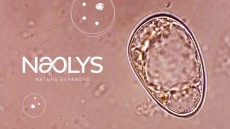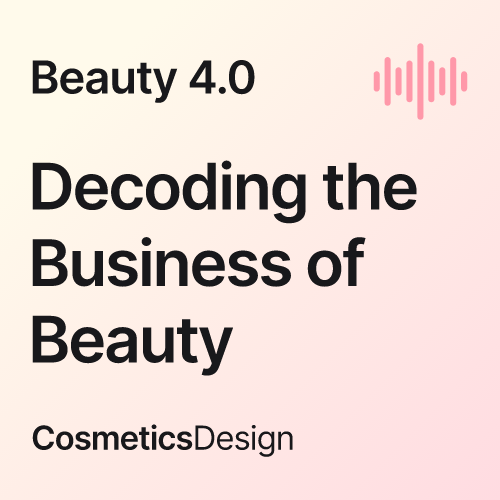Exclusive Interview
How e-commerce is set to revolutionise The Philippines’ beauty potential

Before 2018, The Philippines was under the beauty radar as far as its prominence in the Asia-Pacific and international cosmetics market.
In 2017, the Southeast Asian country had a median age of 24 years old. This relatively young population indicates “a different form of consumerism that impacts the retail and product landscapes”, Sharon Kwek is Senior Innovation and Insights Analyst, Beauty and Personal Care at Mintel stated. Product creators, brand strategists and marketers need to recognise how the country's population influences the types of goods developed, ingredients selected and communication channels chosen.
The country’s young demographic combined with the gradual rise of middle income group as well as urbanisation has led to The Philippines’ beauty potential remaining undiscovered, Kwek noted.
e-Commerce: A help and hindrance
Talking about the biggest opportunities and challenges affecting the Philippines’ opportunity to achieve this growth, Kwek relayed: “e-Commerce sector is both an opportunity and challenge for the Philippines as the market is currently seeing entry from both foreign and local brands.”
At present, Kwek commented that the e-commerce sector is not as developed as other Southeast Asian markets due to poor infrastructure. Despite this lag, the country’s growing middle class and improved logistics influence these growth opportunities.
So, what does the country have to focus on to propel its beauty industry to reach international acclaim and attract other markets? “Give it a bit more time, I believe the e-Commerce space will develop and achieve the desired growth that reap returns,” Kwek stressed.
Filipinos brands have grown both online through social media and offline via local community outlets and luxury shopping centres. Raising awareness and education on product safety and beauty trends on online platforms presents a strong opportunity for local and global names attracted to The Philippines new market potential.
Jumping on the trend bandwagon
Social media has also invited the proliferation of influencer marketing. Local celebrity, Vice Ganda, has launched Vice Cosmetics, which aims to appeal to natural-loving and conscious consumers through promoting PETA-certified cruelty-free and paraben-free items.
K-beauty and its international success offers inspiration for emerging indie Filipino beauty names. By exploring popular cosmetic buys such as lip tints, lip oils and cheek tints, brands are able to utilise K-Beauty's popularity to resonate with consumers.
Filipino mineral makeup name, Ellana Cosmetics, has achieved notoriety through offering “unique Asian beauty”, a responsive e-commerce site and appealing offers.
Local brand Pili Ani is navigating the global beauty marketplace as it strives to combine dominating trends such as natural and active ingredients, personalised beauty and the use of elemi oils. The facial cream, serum and oil beauty name launched its brand in Las Vegas, Nevada, in 2016. Today, it has expanded further in the US through TV homeshopping.
By understanding consumer demands and leading APAC and global trends, beauty and personal care brands can carve out an interesting and relevant market identity.









![Indus Valley is working to corner 30% of India's online premium boxed hair colour market. [Indus Valley]](/var/wrbm_gb_food_pharma/storage/images/_aliases/wrbm_tiny/publications/cosmetics/cosmeticsdesign-asia.com/article/2024/07/26/indus-valley-aims-to-secure-30-of-india-s-online-premium-hair-colour-market-with-organic-offerings/17594932-5-eng-GB/Indus-Valley-aims-to-secure-30-of-India-s-online-premium-hair-colour-market-with-organic-offerings.jpg)
![[Getty Images]](/var/wrbm_gb_food_pharma/storage/images/_aliases/wrbm_tiny/publications/cosmetics/cosmeticsdesign-asia.com/china/china-focus-latest-developments-in-china-s-booming-beauty-market25/17606695-1-eng-GB/China-focus-Latest-developments-in-China-s-booming-beauty-market.jpg)
![Kosé has launched makeup brand Visée in Singapore as part of plans to reinforce its position in SEA. [Visée]](/var/wrbm_gb_food_pharma/storage/images/_aliases/wrbm_tiny/publications/cosmetics/cosmeticsdesign-asia.com/headlines/business-financial/visee-singapore-kose-aims-to-enhance-brand-visibility-in-sea-with-new-launch/17587264-1-eng-GB/Visee-Singapore-Kose-aims-to-enhance-brand-visibility-in-SEA-with-new-launch.jpg)
![ble C&C is set on reinforcing its competitiveness in China’s beauty market. [Missha]](/var/wrbm_gb_food_pharma/storage/images/_aliases/wrbm_tiny/publications/cosmetics/cosmeticsdesign-asia.com/headlines/business-financial/able-c-c-aims-to-strengthen-competitiveness-in-china-through-online-expansion-kol-collabs/17591626-1-eng-GB/Able-C-C-aims-to-strengthen-competitiveness-in-China-through-online-expansion-KOL-collabs.jpg)

![LG H&H genetic study says 23 genetic regions affect natural skin tone. [Getty Images]](/var/wrbm_gb_food_pharma/storage/images/_aliases/wrbm_tiny/publications/cosmetics/cosmeticsdesign-asia.com/article/2024/07/23/lg-h-h-discovery-of-genetic-skin-tone-factors-in-east-asians-potentially-key-to-skin-radiance-developments/17587210-1-eng-GB/LG-H-H-discovery-of-genetic-skin-tone-factors-in-East-Asians-potentially-key-to-skin-radiance-developments.jpg)

![DR.CI:LABO expects brand-supplier partnerships gain more public prominence as consumers interest in skin care grows online. [Dr.Ci:Labo]](/var/wrbm_gb_food_pharma/storage/images/_aliases/wrbm_tiny/publications/cosmetics/cosmeticsdesign-asia.com/article/2024/07/22/brand-supplier-partnerships-will-come-to-the-fore-amid-the-online-skin-care-landscape-dr.ci-labo/17576755-1-eng-GB/Brand-supplier-partnerships-will-come-to-the-fore-amid-the-online-skin-care-landscape-DR.CI-LABO.png)


